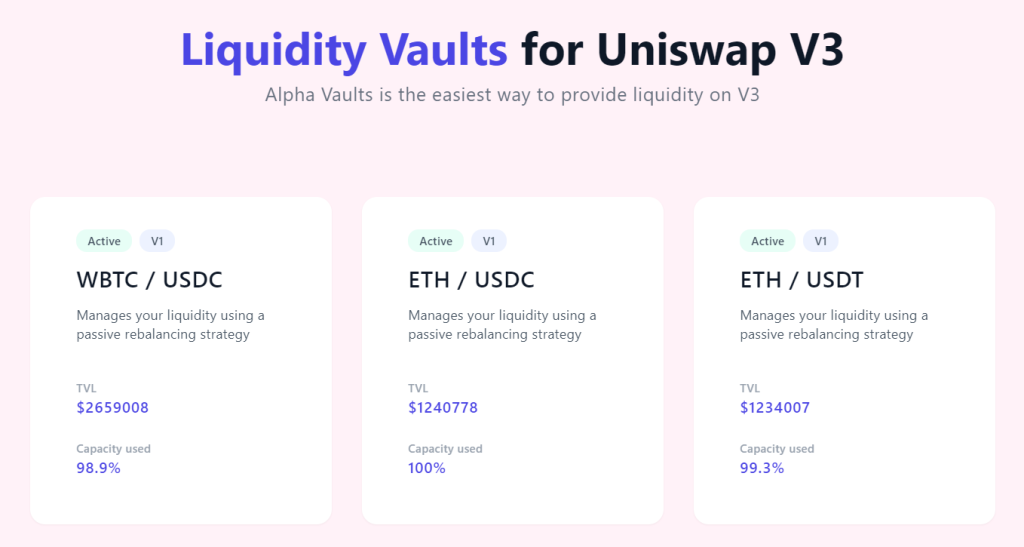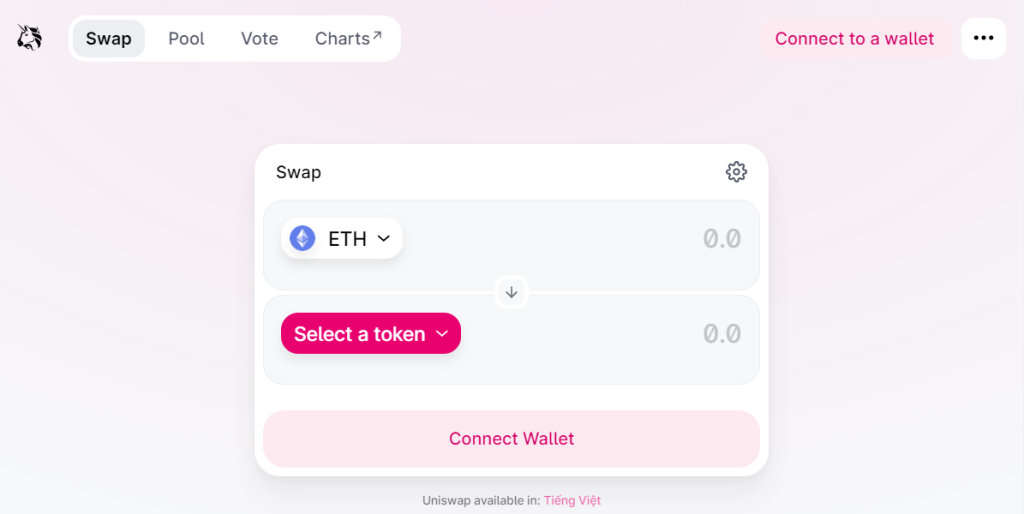
One disadvantage of Uniswap is its high gas fees, especially during network congestion, which can make small trades uneconomical. Additionally, users face risks of impermanent loss as liquidity providers and limited asset support, as Uniswap only supports ERC-20 tokens. Furthermore, the platform’s complexity can be challenging for beginners, and there is significant regulatory uncertainty surrounding decentralized exchanges.
High Gas Fees
Network Congestion
Network congestion on the Ethereum blockchain is a significant factor contributing to high gas fees on Uniswap.
- Increased Demand: When many users try to execute transactions simultaneously, the demand for processing power rises. This leads to network congestion, causing gas fees to spike as users compete to have their transactions processed quickly.
- Peak Usage Times: During periods of high activity, such as major market events or popular DeFi activities, congestion can become severe, further driving up gas costs. Users may experience delays and higher transaction costs during these times.
- Scalability Issues: Ethereum’s current scalability limitations mean that it can only process a limited number of transactions per second. This bottleneck exacerbates congestion issues, especially for platforms like Uniswap that rely heavily on the network.
Transaction Costs
Transaction costs on Uniswap can be prohibitively high, particularly during periods of network congestion.
- Gas Fees: Every transaction on Uniswap requires a gas fee, which is paid in ETH. This fee compensates miners for processing and validating transactions. High gas fees can make small trades uneconomical, as the cost of executing the trade might outweigh the value of the trade itself.
- Cost Variability: Gas fees are not fixed and can vary significantly depending on network conditions. Users must constantly monitor gas prices to optimize their transaction costs, adding complexity to the trading process.
- Economic Impact: High transaction costs can deter smaller investors from using Uniswap, as they might find the fees too burdensome compared to the trade value. This can limit accessibility and reduce the platform’s user base.
- Strategies to Mitigate Costs: Some users resort to timing their transactions during off-peak hours or using Layer 2 solutions like Optimism or Arbitrum to reduce gas fees. However, these strategies may not always be practical or available for all users.

Impermanent Loss
Risk for Liquidity Providers
Impermanent loss is a significant risk for liquidity providers on Uniswap, especially when dealing with volatile assets.
- Definition: Impermanent loss occurs when the price of assets in a liquidity pool diverges from their original prices at the time of deposit. The loss is termed “impermanent” because it may be reduced or eliminated if the prices return to their original state.
- Calculation: The degree of impermanent loss depends on the extent of the price divergence. The greater the price change, the higher the potential loss for liquidity providers.
- Example: If a liquidity provider deposits ETH and DAI into a pool and the price of ETH increases significantly, the provider may end up with more DAI and less ETH upon withdrawal, leading to a loss compared to simply holding the assets.
Volatile Markets Impact
Volatile markets exacerbate the risks of impermanent loss, making it a critical consideration for liquidity providers on Uniswap.
- High Volatility: In highly volatile markets, asset prices can fluctuate dramatically, increasing the likelihood and magnitude of impermanent loss. Liquidity providers must be aware of market conditions and how they affect their positions.
- Frequent Adjustments: Volatile markets may require liquidity providers to frequently adjust their positions to mitigate losses. This can lead to additional transaction costs and complexity.
- Impact on Returns: Impermanent loss can significantly impact the returns of liquidity providers. Even with the collection of trading fees, the losses from price divergence can outweigh the gains, making it a less attractive option for some investors.
- Strategies to Mitigate Losses: To reduce the risk of impermanent loss, liquidity providers can:
- Choose Stablecoin Pairs: Providing liquidity in pairs of stablecoins, which have lower volatility, can minimize impermanent loss.
- Monitor Market Conditions: Staying informed about market trends and price movements helps in making timely decisions to withdraw or adjust liquidity.
- Diversify: Spreading liquidity across multiple pools or platforms can reduce exposure to any single asset’s price volatility.
Limited Asset Support
ERC-20 Tokens Only
Uniswap’s asset support is primarily limited to ERC-20 tokens, which imposes several restrictions on its users.
- Ethereum Ecosystem: Uniswap operates on the Ethereum blockchain, and as a result, it only supports tokens that conform to the ERC-20 standard. This includes a wide range of tokens, such as stablecoins, utility tokens, and governance tokens.
- Token Variety: While the ERC-20 standard covers many popular tokens, it excludes other types of digital assets that exist on different blockchains. This limitation restricts the diversity of assets that users can trade on Uniswap.
- User Limitations: Investors looking to trade non-ERC-20 assets must find alternative platforms, as Uniswap cannot facilitate these transactions. This can be a significant drawback for users who wish to maintain a diverse portfolio across multiple blockchain ecosystems.
No Support for Non-Ethereum Assets
The lack of support for non-Ethereum assets on Uniswap further limits its utility for traders and liquidity providers.
- Cross-Chain Incompatibility: Uniswap does not natively support assets from other blockchains like Bitcoin, Binance Smart Chain, or Solana. Users cannot trade these assets directly on Uniswap, which can be a significant inconvenience for those who wish to consolidate their trading activities on a single platform.
- Bridging Solutions: While there are third-party bridging solutions that allow users to wrap assets from other blockchains into ERC-20 tokens (e.g., Wrapped Bitcoin, WBTC), these solutions often involve additional steps, fees, and risks. The need for such intermediaries adds complexity and can deter users from utilizing Uniswap for cross-chain asset trading.
- Competitor Platforms: Other decentralized exchanges and cross-chain platforms have emerged to fill this gap, offering support for a broader range of assets. These platforms attract users who require more diverse asset support, posing a competitive challenge to Uniswap.
- Future Developments: To remain competitive, Uniswap may need to explore integration with cross-chain protocols or Layer 2 solutions that facilitate the trading of non-Ethereum assets. Such advancements could expand its asset offerings and enhance its appeal to a broader user base.

Slippage Issues
Price Impact on Large Trades
Slippage is a significant concern for traders on Uniswap, especially for large trades. Here’s how it affects transactions:
- Definition of Slippage: Slippage occurs when the executed price of a trade differs from the expected price due to market movement during the transaction. On Uniswap, this is particularly relevant because of the automated market maker (AMM) model.
- Large Trades: When executing large trades, the impact on the token price can be substantial. This is because the AMM model adjusts prices based on the ratio of assets in the pool. A large trade can significantly shift this ratio, leading to a higher price for buyers and a lower price for sellers than initially expected.
- Example Scenario: If a trader tries to buy a large amount of a low-liquidity token, the purchase will drive up the token’s price within the pool. As a result, the trader ends up paying more per token than the price quoted at the start of the transaction.
- Mitigating Price Impact: To reduce slippage, traders can:
- Split Orders: Break large trades into smaller orders executed over time to minimize the price impact on each transaction.
- Monitor Pool Liquidity: Choose trading pairs with high liquidity, where large trades have less impact on the price.
- Set Slippage Tolerance: Use the slippage tolerance feature in Uniswap to limit the maximum acceptable slippage for a trade. If the price moves beyond this threshold, the transaction will not execute.
Liquidity Depth
Liquidity depth directly influences slippage and is a critical factor for efficient trading on Uniswap.
- Role of Liquidity: Liquidity depth refers to the amount of assets available in a liquidity pool. Higher liquidity means that there are more tokens available for trading, which helps stabilize prices and reduce slippage.
- Impact of Low Liquidity: In pools with low liquidity, even small trades can cause significant price fluctuations, leading to high slippage. This makes trading less predictable and can result in higher costs for traders.
- Concentrated Liquidity in Uniswap v3: Uniswap v3 introduced concentrated liquidity, allowing liquidity providers to specify price ranges within which they provide liquidity. This innovation helps concentrate liquidity around the current market price, reducing slippage and improving price stability for trades executed within these ranges.
- Liquidity Providers: Encouraging more liquidity providers to participate in pools can enhance liquidity depth. Incentives like yield farming and staking rewards can attract liquidity providers, leading to deeper pools and more stable trading conditions.
- Choosing Trading Pairs: Traders can minimize slippage by choosing trading pairs with high liquidity. Popular pairs with significant trading volume and substantial liquidity pools are less likely to experience high slippage.

Security Risks
Smart Contract Vulnerabilities
Smart contract vulnerabilities pose significant security risks for users on Uniswap, as they can lead to loss of funds and other malicious activities.
- Code Exploits: Smart contracts are written in code, and any bugs or vulnerabilities in the code can be exploited by attackers. Even minor errors can lead to significant financial losses. For instance, vulnerabilities can allow attackers to drain liquidity pools or manipulate token balances.
- Audit Importance: Regular audits by reputable security firms are crucial for identifying and fixing vulnerabilities. Uniswap has undergone multiple audits by firms like ConsenSys Diligence and Trail of Bits, but no audit can guarantee absolute security.
- Upgrade Risks: While Uniswap v3 introduced several improvements, any new features or changes in the smart contract code can introduce new vulnerabilities. Continuous monitoring and updates are necessary to maintain security.
- User Responsibility: Users should be aware that while audits and security measures can reduce risks, they cannot eliminate them entirely. It’s essential to stay informed about potential vulnerabilities and follow best practices, such as not investing more than one can afford to lose.
Phishing and Scams
Phishing and scams are common threats in the DeFi space, targeting users through various deceptive tactics to steal their funds.
- Phishing Websites: Scammers often create fake websites that mimic the official Uniswap site. These phishing sites can trick users into entering their private keys or seed phrases, giving attackers full access to their wallets.
- Malicious Links: Scammers may distribute malicious links through social media, emails, or chat groups. Clicking on these links can lead users to phishing sites or trigger malicious downloads that compromise their security.
- Fake Tokens: Scammers can create tokens that look like legitimate tokens traded on Uniswap. Unsuspecting users might buy these fake tokens, which have no real value, leading to financial losses.
- Social Engineering: Scammers often use social engineering tactics, posing as customer support or prominent figures in the crypto community to gain users’ trust and access to their funds.
Prevention Measures:
- Verify URLs: Always double-check the URL before entering any sensitive information. Ensure you are on the official Uniswap website: https://uniswap.org.
- Use Trusted Links: Access Uniswap and other DeFi platforms through bookmarks or trusted links. Avoid clicking on links from unknown or unverified sources.
- Hardware Wallets: Use hardware wallets to store your funds. Hardware wallets add an extra layer of security, as they require physical confirmation for transactions.
- Education and Awareness: Stay informed about the latest scams and phishing tactics in the crypto space. Educate yourself and others to recognize and avoid potential threats.
- Two-Factor Authentication (2FA): Enable 2FA on your wallet and other crypto-related accounts to add an extra layer of security.

User Interface Complexity
Learning Curve for Beginners
The complexity of Uniswap’s user interface can present a significant challenge for beginners who are new to decentralized finance (DeFi) and cryptocurrency trading.
- Initial Setup: New users must first install and configure a cryptocurrency wallet, such as MetaMask, which can be confusing for those unfamiliar with blockchain technology. Understanding how to securely store and manage private keys adds to the complexity.
- Connecting Wallets: Connecting a wallet to Uniswap requires navigating through several steps, including authorizing the connection and managing permissions. Beginners might find this process intimidating and prone to mistakes.
- Understanding Fees: The concept of gas fees, which are required for every transaction on the Ethereum network, can be difficult for newcomers to grasp. Calculating and optimizing these fees adds an extra layer of complexity.
- Token Swapping: Executing a token swap on Uniswap involves multiple steps, including selecting the correct trading pair, setting slippage tolerance, and confirming the transaction. Each of these steps requires an understanding of DeFi concepts that might be overwhelming for beginners.
- Resource Overload: The abundance of information and options on the Uniswap interface can be daunting. Beginners may struggle to understand liquidity pools, yield farming, and other advanced features without a solid foundation in DeFi basics.
Lack of Advanced Trading Tools
While Uniswap provides a robust platform for decentralized trading, it lacks some of the advanced trading tools available on centralized exchanges (CEXs) and other DeFi platforms.
- Technical Analysis Tools: Unlike many CEXs, Uniswap does not offer built-in tools for technical analysis, such as advanced charting features, indicators, and real-time data analysis. Traders often have to use third-party services like TradingView to perform technical analysis, which can be inconvenient.
- Order Types: Uniswap primarily supports market orders and basic limit orders. It lacks more sophisticated order types such as stop-loss orders, take-profit orders, and trailing stops, which are standard on many CEXs. These tools are crucial for advanced traders to manage risk and optimize trading strategies.
- Portfolio Management: Uniswap does not provide comprehensive portfolio management tools that allow users to track their holdings, performance, and transaction history in a consolidated manner. Users often need to rely on external portfolio trackers to manage their investments effectively.
- Price Alerts and Notifications: The absence of integrated price alerts and notifications on Uniswap means that traders must continuously monitor market conditions manually or use third-party applications to set alerts, which can be cumbersome.
- Automated Trading: While there are external protocols that enable automated trading strategies, Uniswap does not natively support features like trading bots or algorithmic trading. Advanced traders who rely on automation must integrate with other platforms or develop custom solutions.

Regulatory Uncertainty
Legal and Compliance Risks
Regulatory uncertainty presents significant challenges for users and operators of decentralized exchanges (DEXs) like Uniswap. Here’s how legal and compliance risks can impact the platform and its users:
- Lack of Clear Regulations: Many countries have yet to establish clear regulations for cryptocurrencies and DeFi platforms. This ambiguity creates a legal grey area, making it difficult for users and developers to understand their obligations and risks.
- Potential Legal Actions: In the absence of clear regulations, authorities may take unpredictable enforcement actions against DEXs. These actions could range from fines and penalties to shutdowns, impacting the availability and usability of platforms like Uniswap.
- KYC/AML Compliance: Traditional financial regulations require Know Your Customer (KYC) and Anti-Money Laundering (AML) procedures to prevent illegal activities. As a decentralized platform, Uniswap does not currently enforce KYC/AML checks, which could become a point of contention with regulators.
- User Risk: Users may face legal risks if they inadvertently violate local regulations while trading on Uniswap. This risk is particularly high in jurisdictions with stringent cryptocurrency laws. Users need to stay informed about the legal landscape in their region to avoid potential legal issues.
- Operational Risks: Developers and operators of DEXs must navigate a complex and evolving regulatory environment. The lack of regulatory clarity can hinder innovation and operational stability, as developers may need to constantly adapt to new legal requirements.
Future Regulations Impact
The future of cryptocurrency and DeFi regulations will significantly impact Uniswap and similar platforms. Here’s how potential regulatory changes could shape the landscape:
- Increased Regulation: Governments worldwide are increasingly scrutinizing the cryptocurrency space. Future regulations could impose stricter compliance requirements on DEXs, such as mandatory KYC/AML checks. While these measures could enhance security and reduce illicit activities, they may also undermine the decentralized nature of platforms like Uniswap.
- Licensing Requirements: Regulatory bodies might introduce licensing requirements for operating a DEX. Obtaining and maintaining such licenses could be challenging and costly, potentially leading to a consolidation of platforms and limiting competition.
- Consumer Protections: Future regulations might focus on enhancing consumer protections, such as ensuring transparency and safeguarding user funds. While beneficial for users, these regulations could increase the operational burden on DEXs and require significant changes to their current models.
- Tax Implications: Clearer regulations could also address tax reporting requirements for cryptocurrency transactions. Users might be required to report their DeFi activities more comprehensively, impacting their tax liabilities and record-keeping practices.
- Market Impact: Regulatory developments can influence market dynamics and user behavior. Positive regulatory clarity might boost investor confidence and increase participation in DeFi. Conversely, overly restrictive regulations could deter users and stifle innovation, leading to reduced liquidity and trading volumes on platforms like Uniswap.
- Adaptation and Innovation: The ability of Uniswap and other DEXs to adapt to new regulations will be crucial for their continued success. Platforms that can effectively integrate compliance measures while maintaining decentralization will likely thrive in a regulated environment.